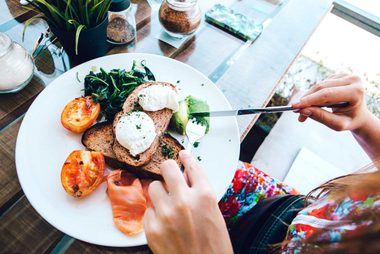
Holding knives wrong
Most people hold a knife by wrapping all their fingers around the handle or with their pointer finger on the top of the knife blade, but these grips aren’t only wrong (big kitchen mistake!), they are very unsafe. According to Robert Ramsey, Chef Instructor at the Institute of Culinary Education, you’re actually supposed to hold your kitchen knife with your thumb on one side of the blade and your pointer finger on the other side with your remaining three fingers wrapped tightly around the top part of the handle. “If you’re holding your knife properly, you’ll be able to make straighter cuts,” he says.
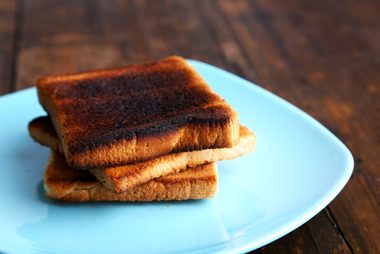
Intentionally burning your foods
For those of you that like say, charred and blackened toast, it’s time to turn down the toaster. Besides tasting off, burning your food creates carbon (the blackness you see), a known carcinogen that’s been linked to all kinds of cancers. “Burning food is something you’ll want to avoid because the carbon increases your risk of cancers and it also creates a bitter flavor,” says Ramsey. Both are huge no no’s. Here are some cooking mistakes that can make your food toxic.
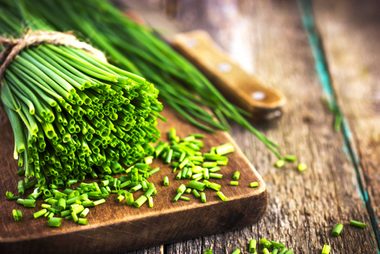
Adding ingredients in the wrong order
A recipe has steps you’re supposed to follow for a reason: flavor development. If you add your ingredients out of order, you risk ruining the dish and/or creating a meal that tastes off from the original recipe. For example, a lot of herbs, like parsley and chives, are added towards the end of the cooking process in recipe because they tend to lose their flavor the longer they cook. Herbs are an easy way to spice a bland dish, but can also be pretty costly.
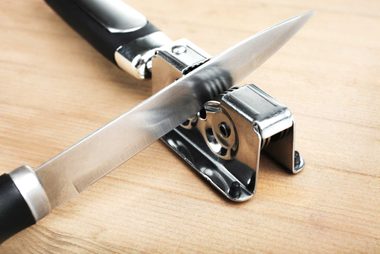
Not sharpening knives regularly
“People think they can sharpen their knife once every five years, yet a sharp knife makes all the difference in the world with everything in the kitchen,” Ramsey says. Even if you’re a casual cook that makes two to three meals a week, you should still be sharpening your knives at least two to four times a year. Ramsey recommends avoiding this kitchen mistake by spending a few extra dollars and getting your knives professionally sharpened, as it’s super easy to accidentally chip or break the blade. If your everyday knifes are pretty basic, you can probably get by with this inexpensive hand-held knife sharpener. And no, that metal rod that comes in most knife kits isn’t a knife sharpener. It’s actually called a honing steel that’s used to straighten, not sharpen, the blade.
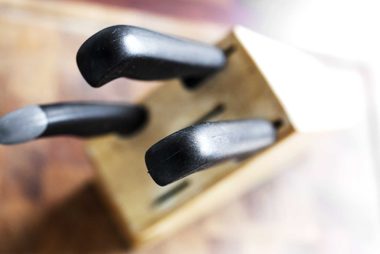
Buying a fancy knife set
It’s tempting to add that fancy knife set and block to your wedding registry, but Ramsey says it’s better to buy knives individually. “You have to really weigh if the price is worth it when you really don’t need half the knives,” he says. This is actually a really good point. Think of your current knife set that probably cost you more than you’d like to admit. Have you used that giant cleaver? Guessing probably not.
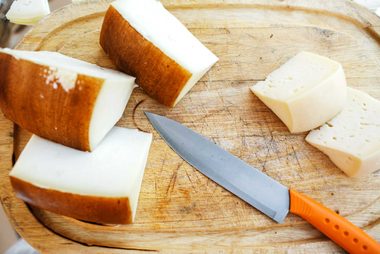
Leaving knife blades uncovered
Make sure you never leave your knife blades uncovered, especially if you store your sharp knives with the rest of your utensils in a jumbled up drawer. Besides accidentally slicing off a finger, as previously mentioned, the knife blades are extremely thin and brittle and can easily dent and chip if unprotected, so avoid this kitchen mistake and consider purchasing knife blades, which can be found at most grocery stores. If you have a knife block, make sure you put the right sized knives in the right sized slot. “The knife will last a lot longer if the blade is protected,” adds Ramsey.
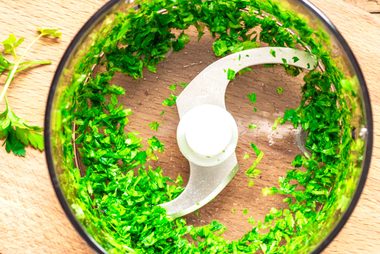
Using a food processor when you should be using a mixer
A blender, mixer, and food processor all serve different purposes and are designed to do different things. A blender is used to mix and puree food, giving it a creamy or velvety texture, like a smoothie. A mixer, like the KitchenAid, stirs, whisks, or beats foods, like dough. A food processor or Cuisinart is kind of a hybrid of both a blender and a mixer. “While some tasks are interchangeable, the machine as a whole is not,” says Ramsey. For example, you will never be able to make a dough in your blender. Be sure to check out these kitchen organizing ideas.
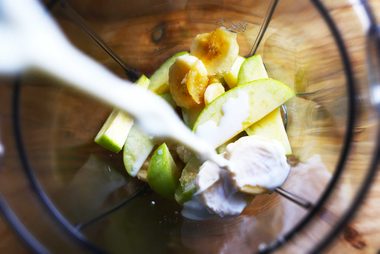
Putting hot liquids and foods in the blender
If you’re a professional chef and have experience putting hot foods and liquids in the blender, this isn’t that big of an issue, but be forewarned: it’s a lot easier to burn yourself that you’d think. The added steam trapped in the blender can cause extra pressure to blow off the lid and cause the hot liquid to explode everywhere. No wonder it’s one of the most common blender mistakes people make. The only safe way to blend a hot liquid is by placing a folded towel over the blender lid, holding it down, and starting to blend on a slow speed before increasing in intervals. Or you can always reduce your chances of getting a third-degree burn and just let your foods cool a bit before blending. Find out about 25 cooking mistakes that ruin your food.
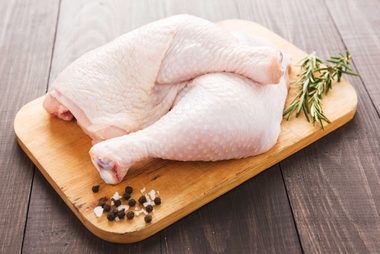
Allowing ready-to-eat foods and raw foods to touch
The Food and Drug Administration (FDA) has termed foods that need no further preparation to achieve food safety as ready-to-eat or RTE (think fruits and veggies). To avoid cross-contamination, you should never put RTE foods and raw foods on the same plate or cutting board. This means never put a cucumber on the same cutting board that you used to slice raw chicken without washing first.
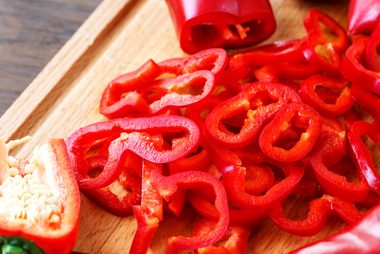
Cutting meats before veggies
Again, cross-contamination, people. While you don’t need two separate cutting boards for your meats and veggies, you should always cut your vegetables before your meat. This way you don’t have to clean the cutting board numerous times and you reduce your chances of cross-contamination. “There is no real reason why you can’t cut your chicken and your peppers and your onions all on the same cutting board, but you need to make sure to cut your veggies before cutting potentially hazardous foods like meats,” advises Ramsey. And if you’re cooking all the foods together, for example, a chicken and veggie stir-fry, it’s completed safe to put all the raw foods together in a pan.
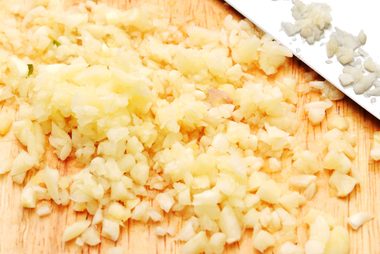
Prepping ingredients as you cook
If you want to save time and end up with a tastier meal, you should definitely have all your ingredients measured out and prepped before you start the cooking process, not during. The French even have a phrase for this, “mise-en-place,” which translates to, “putting in place.” “You should get into the habit of prepping every single ingredient from start to finish before you start cooking anything,” says Ramsey. This way if the recipe calls for adding minced garlic right after the broccoli, you have the garlic ready and minced. Spending time to have to mince the garlic mid-step may actually end up ruining the recipe. You’ll wish you knew these brilliant kitchen shortcuts sooner.
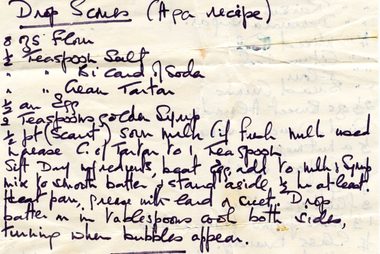
Forgetting to read the entire recipe first
You’d be surprised by the number of people that start cooking before reading the entire recipe from start to finish beforehand, but you should always read it through at least once before even turning on the stove. You’ll not only see the needed ingredients, but you’ll also be able make sure that you have all of the necessary tools. There’s nothing worse than being mid-recipe only to realize you’re out of garlic.
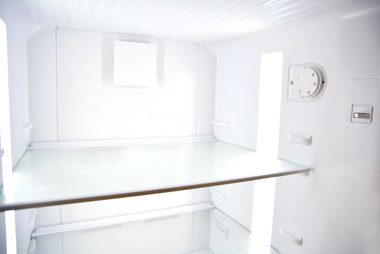
Storing meats on the top shelf of your fridge
“If you don’t want to eat it straight out of the fridge, like raw chicken, it goes on the bottom of the refrigerator,” says Ramsey. The reason for this is very straightforward: storing meats on the bottom ensures that if it drips, it won’t get the nasty juices all over your RTE foods. Consider storing fruits and vegetables at the top, dairy, and prepared items in the middle, and raw meats, fish, and hazardous foods at the bottom to make the best use of your fridge. Here are the best ways to make sense of your fridge.

Never cleaning your fridge
When is the last time you gave your fridge a good deep cleaning? Yeah, probably never, which is understandable because many people don’t think of their fridge as part of their daily cleaning ritual. Technically, you should be cleaning your fridge weekly, but if you find this daunting, try giving it a deep clean at least once a month, and, of course, wipe up spills immediately as they happen. This way you’ll prevent bacteria from spreading, which can lead to cross-contamination.
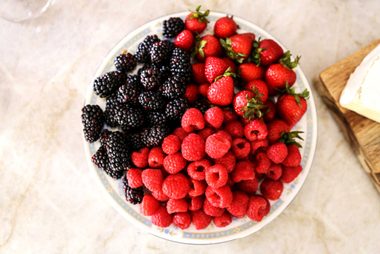
Leaving fruits and veggies on the counter vs. fridge
It’s totally up to you and whether you prefer to enjoy your apples at room temperature or chilled, when it comes to counter vs. fridge. Most produce should be kept at a temperature that you probably don’t have access to, which is around 55 degrees—warmer than your fridge, but colder than your kitchen, thus fridge or counter is your choice. The refrigerator will increase the shelf life of just about every fruit and vegetable, but it also takes away some of the flavor, so if you plan on eating your produce right away, leave it out on the counter because it’ll taste better, but if you want to save it for a few days, you should place it in the fridge.
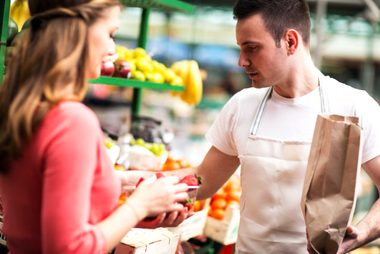
Buying produce in bulk
This goes back to the counter vs. fridge dilemma. Your produce will taste better if left out on your counter and eaten right away, but right away is the key issue here. Now if you buy your produce in bulk, you’ll most likely have to put some of it in the fridge to increase the shelf life, which in turn will leave your produce less tasty. Solution? Instead of your weekly grocery haul, consider making two to three smaller trips per week. Yes, going to the grocery more times may be a pain, but you’ll be eating fresher and yummier foods. Here are 20 produce mistakes you didn’t know you were making.
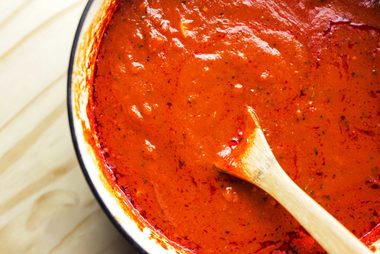
Not tasting foods
“You should be tasting at every step of the process,” urges Ramsey. “The people who say that you should not taste your food until it’s done are without a doubt wrong and I don’t think you’d find a professional chef in the world who would tell you not to taste.” Tasting your foods as you go is extremely important as it’s the only way to know that you’re correctly following the recipe. Ramsey recommends tasting after each major ingredient change. Obviously, don’t try raw meats, but if it’s safely edible, taste while cooking. “If you’re not tasting as you go, there’s no way to know what you’re putting on there,” he adds.
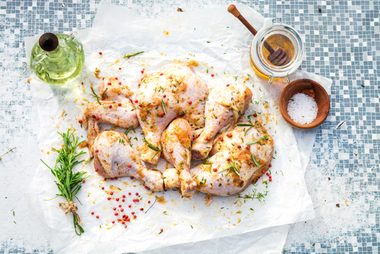
Seasoning all at once
“Season in layers,” says Ramsey. This means if the recipe calls for seasoned chicken, followed by seasoned onions, followed by seasoned peppers, you season each item individually. You wouldn’t want to put all the ingredients in a pan and then season all at once, as the flavors may turn out a bit off. For instance, the food at the top may be too seasoned, while the food at the bottom not seasoned enough.
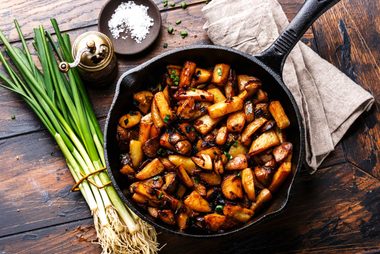
Overcrowding the pan
Chef Ramsey heard a colleague say this phrase to one of his classes and thought it described how full your pan should be perfectly. “When you’re putting food in a pan, you want it to be like an elevator. You want everyone to get it, but nobody touching,” they said. So you can put enough food in a pan that the bottom is fully coated, but each individual piece of food should have its own space to ensure it cooks evenly and thoroughly. Overcrowding the pan will cause your dish to take longer to cook, and cause your food to turn mushy.
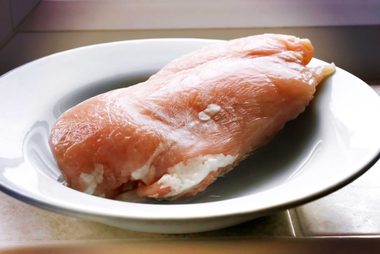
Thawing meats on the counter
You never ever want to thaw a piece of meat by just leaving it right on your counter. Bacteria will immediately start growing once the meat becomes warmer than 40 degrees. The safest three ways to thaw meat are in the microwave on a low heat, in the refrigerator, or in cold water. Regardless of the thawing method you chose, you must first put the meat in a bowl. You’d never place the meat directly and uncovered in the microwave or on a shelf in your fridge.
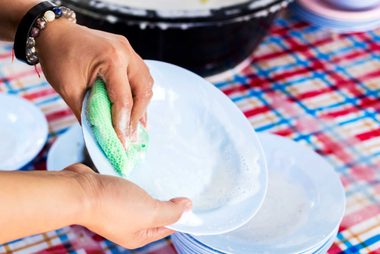
Using the same sponge over and over again
Sponges are one of the dirtiest, if not the dirtiest item in a kitchen. These tiny miracle workers often get overlooked when it comes to cleaning the kitchen because they’re usually the ones doing the cleaning. If you wash the dishes every day, you should be getting a new sponge at least once a month, or after 30 uses. Bacteria builds up very quickly on sponges and if not washed properly, you can spread the bacteria to all the items that the sponge touches.
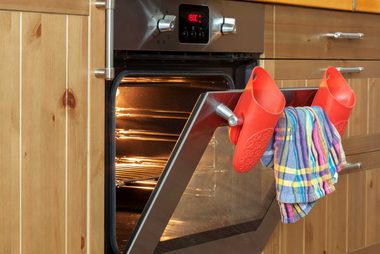
Putting foods in the oven before it’s completely preheated
You need to allow your oven to fully preheat before sticking in your dish. Most items, especially baked goods, won’t cook properly if they’re placed in the oven before it’s completely preheated, so be patient and allow for it to warm up. Your food will actually cook faster in a preheated oven. You’ll enjoy your meal that much more, and you know what they say… patience is a virtue. Find out 18 ways you’re using your microwave wrong.
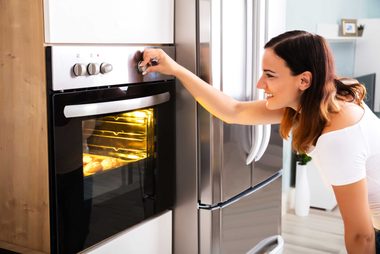
Making the oven too hot
No, cranking up the oven to 450 when the recipe calls for 350 won’t make your dish cook faster. In fact, it’ll most likely burn your dish and potentially cause your oven to smoke. Cooking is a chemical process that involves chemical reactions, which is why you have to follow the required temperatures to the fullest extent. Here are some other ways you’re using kitchen appliances wrong.
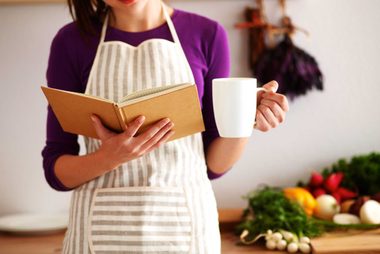
Only cooking from a recipe
While recipes are great, you should also know how to cook a few staple dishes on your own that don’t require one, like grilled chicken or pasta, because sometimes you just don’t have time to go to the grocery store and get all the needed ingredients that a fancy recipe calls for. To make this possible, you should be sure your kitchen pantry is stocked with the basics, so you can whip up a last minute meal quickly and recipe-free.
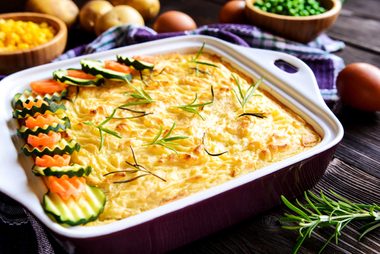
Underestimating the amount of time it’ll take
We’ve all done it. Started following a recipe and cooking a dish that we thought would take an hour that in reality ends up taking three. Obviously mistakes happen and sometimes you have no other choice than to start over from the beginning if you say, add too much salt or completely burn the fish, but it’s important to accurately calculate the amount of time it’ll take you to completely finish a dish, starting with ingredient prep to tasting the first bite. A lot of people forget to add the chopping and prepping time. Just be mindful and realistic of the time you have and the time it’ll take to prepare, and know that time estimates on a recipe are that, an estimate, not a time set in stone.
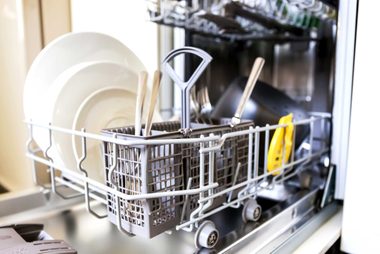
Putting nice dishware in the dishwasher
What’s the point of spending $450 on a fine china dishware set only to ruin it in the dishwasher? If you’re using your fancy and expensive dishware, wash it by hand. You’ll regret being lazy and destroying it in the dishwasher. Keep sharp knives and these other 8 things out of the dishwasher.
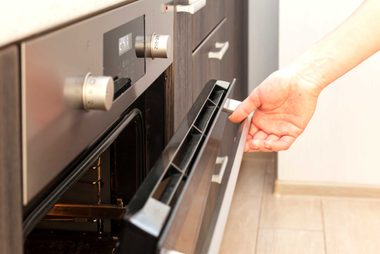
Checking on your food too frequently
You know that old saying, “a watched pot never boils”? Well technically it’s wrong because yes, eventually your pot will boil, (assuming the stove is on of course), but whoever said it does have a good point. Hovering over your dish and checking it too frequently won’t cause it to cook any faster. In fact, it’ll probably slow down the cooking process. Every time you open the oven door, you allow cold air to seep in, therefore slowing down the process, so stop stirring, checking, and flipping, and just let your food cook.
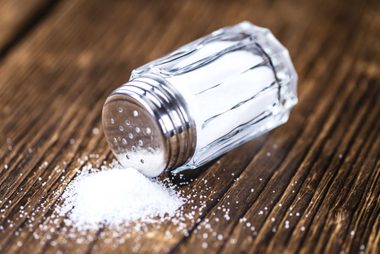
Under salting your foods
Salt gets a very bad rap when it comes to food and for good reason. Sodium is the culprit behind many horrible health problems like bloating, high blood pressure, heart failure, and an increased risk of strokes, just to name a few of the awful things that can happen if you consume too much salt. This is probably why people are scared to add this ingredient when cooking, but not putting enough salt in your dish will lead to a bland meal. Of course, if you can’t have salt per doctor’s orders, you shouldn’t add it, but if a recipe calls for a few tablespoons of salt, go for it.
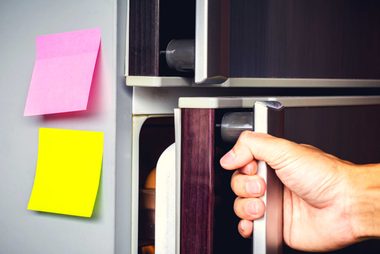
Placing hot food in the fridge
There’s some disagreement among the experts about whether putting hot foods in a fridge is truly bad for your health, but the general consensus is that you should never put burning hot foods immediately in the fridge or freezer. Don’t be scared leaving foods out to cool, as it’s perfectly fine for most items to be left sitting out for up to two hours before putting in the fridge. If you’re trying to cool a dish waster, say soup, you can divide up the soup into smaller, shallow containers and place in the fridge to cool, but never stick a giant, deep hot dish directly in the fridge, as this may cause bacteria to grow. Here are 12 surprising things that actually do need to be refrigerated.
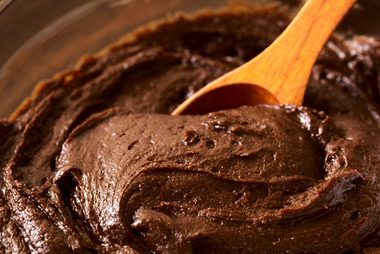
Mixing in a too small bowl
There is absolutely nothing worse than mixing a batch of brownies and having the flour, sugar, and chocolate fly all over the place because the bowl is too tiny. This is extremely annoying and just causes a huge mess. So when it comes to mixing ingredients, always go big. The bigger the better, when it comes to bowls.
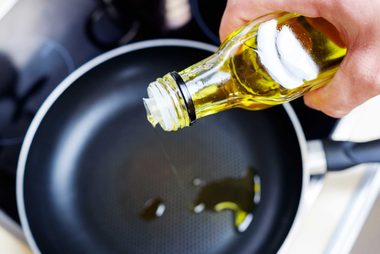
Forgetting to coat the pan
Coating a pan with olive oil or butter is very important, especially if you’re using a pan that’s not non-stick. You don’t want your food to stick to the bottom when you try to take it out. Depending on what you’re cooking or baking, you can use parchment paper to avoid using an oil or butter altogether.
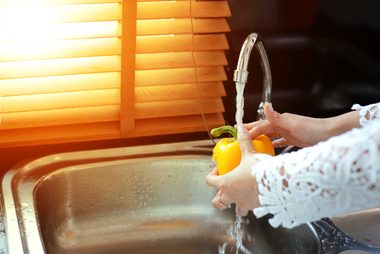
Sauteing wet veggies
Most vegetables already have a high water content, so if you saute veggies that aren’t completely dry, not only will they possibly turn mushy, but the water mixed with the oil in the pan will cause lots of hot splatter and steam. If you’re in a time crunch and can’t let your produce dry naturally, use a paper towel to gently squeeze and press out the extra water.
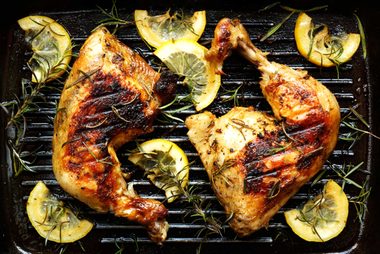
Cutting cooked meat before it has a chance to rest
Wonder what the heck it exactly means to let meat “rest”? It basically means allowing a cooked piece of meat to sit and cool before cutting it. Usually this involves loosely covering the meat with a piece of foil from anywhere between 10 and 20 minutes. Allowing meat to rest will make it juicier and less dry. Find out about 10 cuts of meat you shouldn’t throw out.
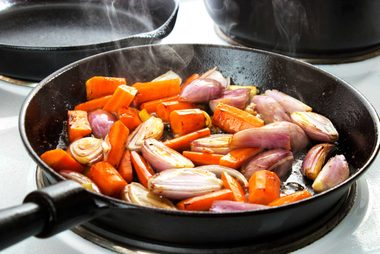
Not letting the pan get hot enough
Not letting the pan reach the necessary needed heat before placing food it in has similar consequences to not letting an oven preheat: the food may not cook evenly through, the recipe may take longer to cook, and of course burning may occur. A recipe calls for a certain temperature for a reason, so following the number on the stove is crucial. It’s important to know that low heat is between one and three; medium heat four and six; high heat seven and higher.
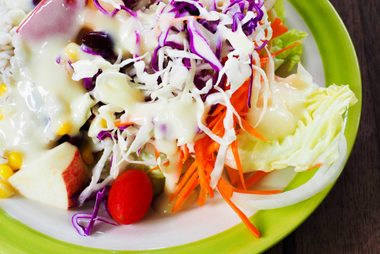
Adding dressing too early
There’s a difference between letting something marinate and adding dressing. Usually marinating takes time and is most often done to meats, while vegetables are usually dressed. You never want to put dressing on too early as it’ll cause your vegetables to wilt and turn mushy. While it’s perfectly okay to prep salad ingredients the night before, you should hold off until right before eating to add the dressing.

Using the wrong oils
All oils react differently to heat and have different smoke points, so picking the right one is very important if you want your dish to turn out properly. If you’re looking to cook something on low heat, your best bet is to go for an unrefined oil as they have lower smoke points, but if you want a healthy oil, avocado, almond, coconut, and flax seed oils have been widely popular because of the lower fat content. Olive oil is a good choice for most dishes, as it comes in extra virgin, virgin, extra light, etc. that all have different smoke points. These are the safest cooking oils you can use for every type of meal.

Washing hands only once
Most people know that they’re supposed to wash their hands before cooking or eating, but according to Deirdre Schlunegger, CEO of STOP Foodborne Illness, a national nonprofit public health organization dedicated to the prevention of illness and death from foodborne pathogens, you should wash your hands multiple times throughout the cooking process. “Wash your hands with soap and running water for 20 seconds,” she advises. “Wash before reaching for spices or equipment and after handling food. Just think about handling chicken and then reaching in the cabinet for spices; now the spice container might be contaminated.”
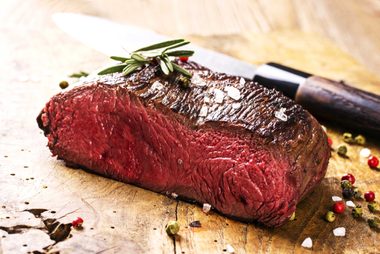
Using the same knife
Schlunegger says it’s “critical” to use separate knives when cooking to avoid cross-contamination. But beyond using different knives for health reasons, knives serve many different purposes. A steak knife is sharper than the knife you’d use to slice a piece of bread or to chop a carrot. Find out the 10 mistakes everyone makes when cooking steak.
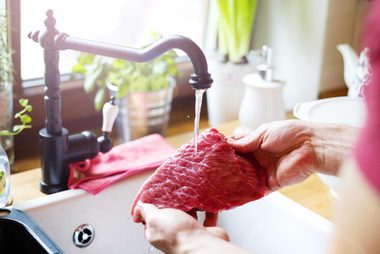
Rinsing meat off
Both Ramsey and Schlunegger agree that there’s no need to wash meat before cooking, but for different reasons. Ramsey says washing meat may increase the water content, which can, in turn, change the overall flavor. Schlunegger says cleaning meat first should be avoided for health purposes. “We don’t recommend washing chicken or other meat as the cooking process should kill the pathogens and there is a possibility of cross-contamination when doing so,” she says. However, both concur that any bacteria on raw meat will be killed during the cooking process, so stop your cleaning.
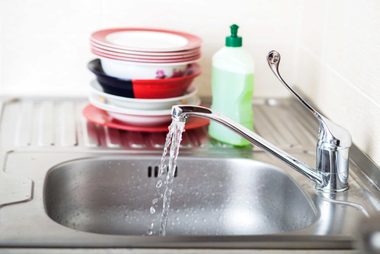
Forgetting to clean the sink
The sink, like the sponge, is often forgotten when cleaning the kitchen, because also like the sponge, the sink is involved in the cleaning process. But wiping down your sink after washing the dishes and using some type of cleaning spray like Clorox is crucial if you want to maintain a bacteria-free kitchen. While soap and water works, a good deep cleaning should be done every few weeks. “Keep your sink clean and don’t defrost meat in your sink,” says Schlunegger. Here are some of the ways you’re cleaning your kitchen wrong.
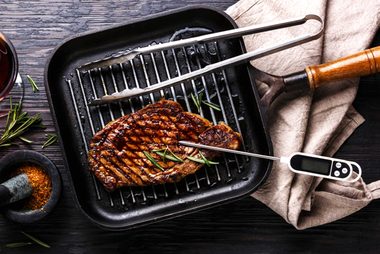
Skimping on the meat thermometer
Using a thermometer is important because you’ll have tastier foods, but also foods that are cooked 100 percent to food safety standards. While some meats, like beef and lamb, can be cooked anywhere from rare to well-done, poultry should have a standardized temperature of 165 degrees. “Cooking to the recommended temperatures is so important and easy to do,” exclaims Schlunegger. So whether you’re grilling, sauteing, or browning your meat, make sure you cook it to the correct temperature.
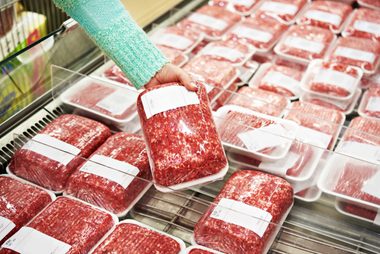
Skipping the plastic meat bag
All grocery stores have additional plastic bags (similar to the produce ones) that should be used whenever you buy meat. While it’s tempting to grab a package of chicken breasts and throw them directly into the cart (and we applaud your efforts to reduce your plastic bag use), take the two extra seconds and place it in the plastic bag. When you take your meat home, don’t remove it from the said plastic bag, instead, put it directly on the bottom shelf of your refrigerator.

Leaving groceries out
Grocery shopping is exhausting, especially if you have a grabby toddler in tow, but make sure you push through the struggles and put your groceries away immediately after you get home. In general, most perishable items can only be left out for a maximum of two hours. And the word most is used loosely here, as there are some items, like ice cream for example, that need to put away ASAP. “Put your groceries that require refrigeration or a freezer away right away when you get home,” says Schlunegger. “If it is warm outside, take a cooler or insulated bag with you to the store.”
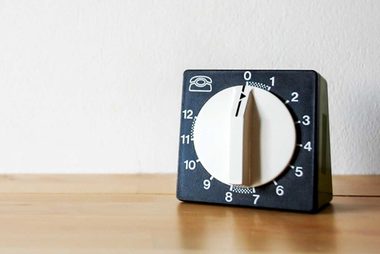
Not setting a timer
“Always set a timer when you are baking,” says Heather Christo, author of Pure Delicious: 150 Allergy-Free Recipes for Everyday and Entertaining. “The number one dumbest mistake is to think that you will remember. It almost never works out that way.” You put a cake in the oven and decide to watch one episode of your favorite show to act as your timer (hey the cake takes 45 minutes and the episode is 45 minutes!), but somehow one episode turns into two and before you know it you’ve burnt your cake to a crisp. Just set the timer and this won’t ever happen. Don’t miss these other baking mistakes you might be making.
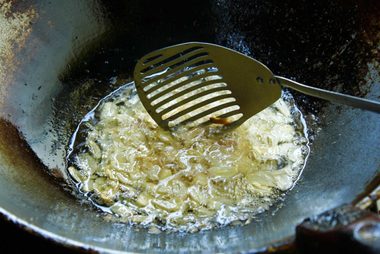
Walking away from a hot pan with garlic
Now this tip is extremely specific, but garlic is used in most dishes, and it burns incredibly fast, which can ruin your dish in an instant. It usually only takes 30 seconds for garlic to cook. “Do not walk away from a hot pan with garlic cooking, because nine times out of ten it will burn,” says Christo. Here’s the biggest mistake you can make when cooking pasta.
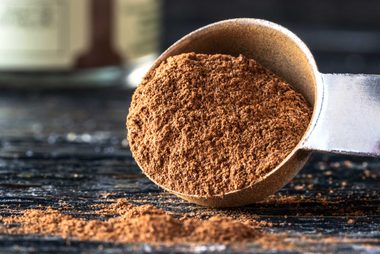
Eyeballing measurements
Never ever eyeball an ingredient. Use an actual measuring device because while you may think you know what one and a half tablespoons of cinnamon looks like, you won’t actually have the exact needed amount unless you use a measuring spoon. “Use exact measurements when you are baking because this is one area where a recipe really matters,” urges Christo. “Skimping on an ingredient or skipping it because you don’t have it does not work.”

Adding water
Unless the recipe specifically calls for water, don’t add it “just because.” Water is bland and can quickly turn a soup into a tasteless muddy pond. And be careful about adding water in a slow cooker, because a lot of foods will release their own water and juices in the cooking process. Plus, there are so many better options you can use if you need to add liquid to a dish. “There is always a liquid that you could use in its place that will add more flavor to the recipe, whether it is broth, juice, wine, coconut milk—it’s an opportunity to build more dimension in flavor,” says Christo. Check out these times you’ve been using your slow cooker wrong.
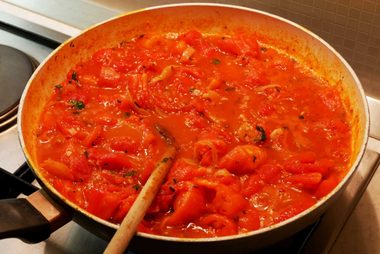
Salting too early
So you don’t want too little salt and you certainly don’t want too much salt, but there’s also such a thing as salting too early. Christo recommends waiting to salt your dish until the end of the cooking process because “if you are making a sauce and you salt it early and then reduce the sauce, it will be too salty,” she says.
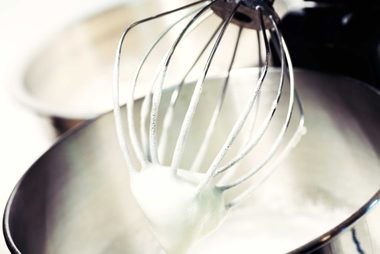
Throwing away the directions
So you buy a brand new Cuisinart, first things first: read the directions before cooking. It’s easy to get caught up in the excitement of a new product, but forgoing the instructions for an impulse cooking spree can not only ruin your new kitchen equipment but even lead to injury. Take 10 minutes to read the manual and understand each and every button. You’ll feel more confident and comfortable in the kitchen using your new gadget.
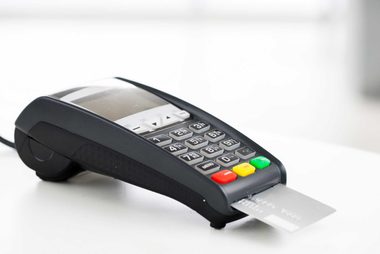
Spending money on useless kitchen gadgets
Kitchen and cooking supplies are everywhere. It seems like a new better, longer lasting, healthier food and cooking-related products hits the market every day. Think of how many kitchen supplies you have in your drawers that you never even use. The avocado pitter anyone? While some items, like mixers, blenders, and pots and pans are worth splurging on, you can skimp on the trendier items. Next, don’t miss these kitchen hacks to keep your groceries fresh all week along.